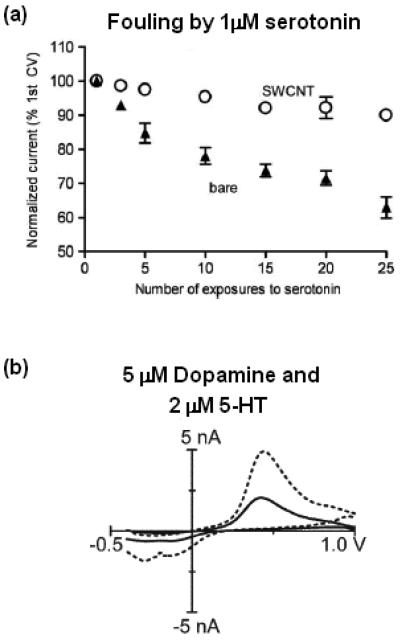Figure 1.
The Venton lab used carbon nanotube-modified CFMEs for measurement of serotonin and dopamine. (a) Effects of nanotubes on fouling of the electrode by serotonin. Bare electrodes (▲) have a larger decrease in current after repeated exposure to serotonin (5-HT) than single-walled carbon nanotube-modified electrodes (SWCNT, ○), showing that carbon nanotubes protect the electrode from fouling. Reproduced from Figure 6 of Reference 15 (Copyright 2007, The Royal Society of Chemistry, U.S.A.) (b) Detection of 2 μM serotonin and 5 μM dopamine simultaneously in vitro. The carbon nanotube-modified electrode (dotted line) shows two reduction peaks, which allow the differentiation of dopamine and serotonin more easily than at a bare electrode (solid line). Reproduced from Figure 2 of Reference 15 (Copyright 2007, The Royal Society of Chemistry, U.S.A.).

